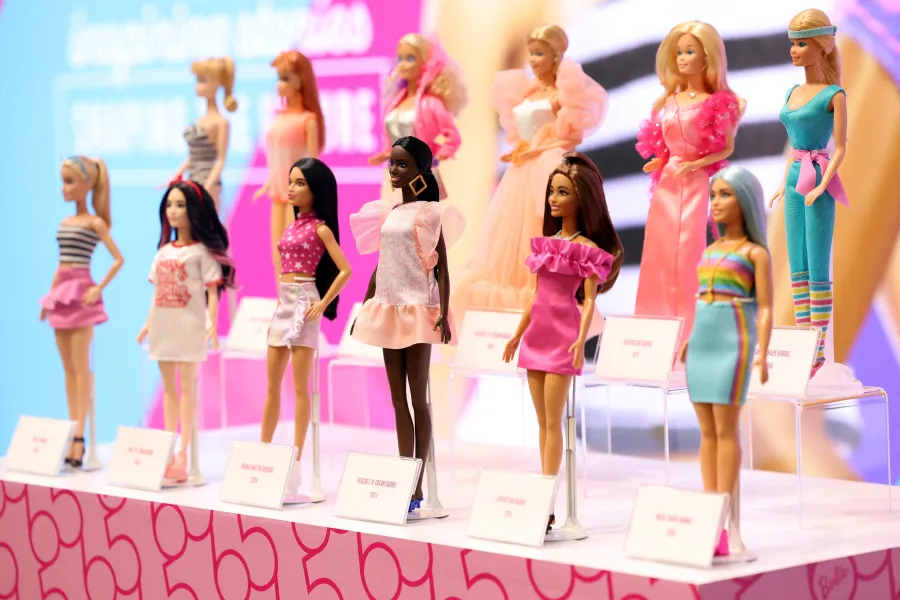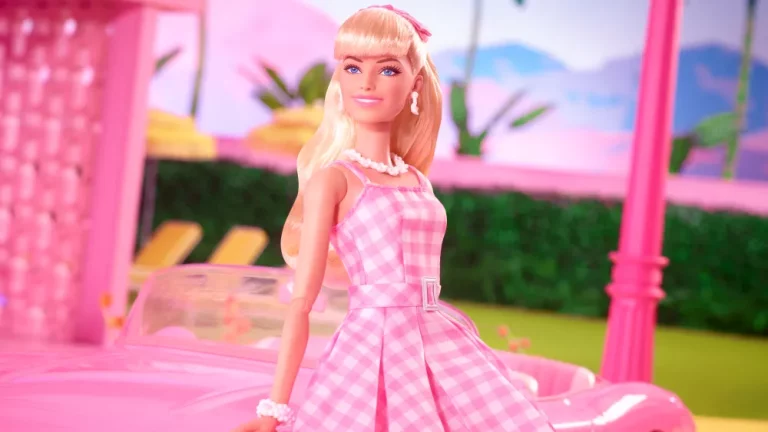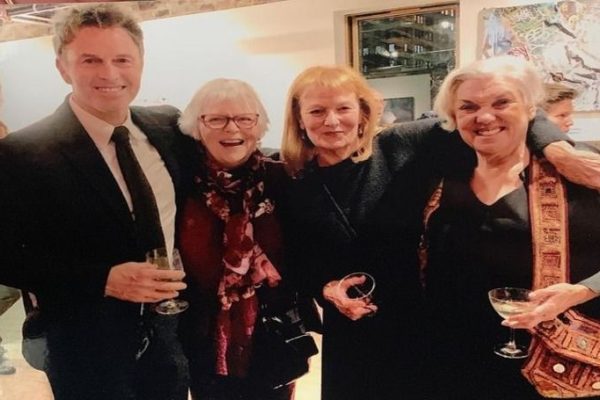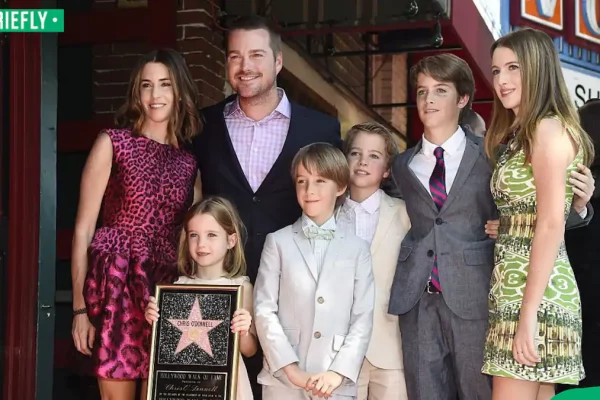Introduction: The Ever-evolving Icon
Barbie, born on March 9, 1959, swiftly became the most popular doll in the city by August 1963, as proclaimed by advertisements of a toy that cost a mere three dollars back then (equivalent to about 30 dollars after adjusting for inflation). By 1965, Barbie had already ventured to the moon. By the mid-1970s, she owned a camper, worked as a surgeon, and participated in the Olympics. In the 1980s, her hair was styled by Vidal Sassoon, and she was painted by Warhol. She became Hispanic, Black (unlike her friends), flew airplanes, became an astronaut, and even appeared on MTV. In the 1990s, she played soccer, wore Bob Mackie designs, and had held the presidency several times. In the 2000s, she donned Versace gowns and Juicy Couture tracksuits, walked fashion runways, and starred in over 30 movies. In the 2010s, she amassed over two million followers on social media, featured for the first time with three different body types, and even dressed as Karl Lagerfeld. And in this decade, where she portrayed Queen Elizabeth II, had vitiligo, Down syndrome, and used a wheelchair, while also embracing TikTok, Barbie turns 65. Welcome to retirement age. But does the meteoric career of the world’s most famous doll end here? Far from it. She still has many roles to play and worlds to explore, especially after the boost from her eponymous movie. In the offices where she was born and has matured over these 65 years, Barbie remains the queen.
Chapter 1: The Heart of Barbie’s Universe
Nestled in the serene town of El Segundo, California, lies the headquarters of Mattel. Despite its tranquility, the town boasts a Chevron refinery, Boeing facilities, and offices for the Los Angeles Lakers and the Los Angeles Times. Amidst the quiet streets occasionally traversed by pink vans adorned with massive Barbie billboards, lies the route to Barbieland—an aptly named shuttle service ferrying employees and visitors to Mattel’s headquarters, the birthplace and nurturing ground of the iconic doll. The Mattel campus, distinct from its cinematic portrayal, teems with creativity and innovation. Towers reminiscent of those in Greta Gerwig’s film dot the landscape, alongside low-rise buildings housing the design team responsible for breathing life into Barbie and her universe.
Chapter 2: Behind the Scenes at Mattel
Within the Mattel headquarters, a highly specialized workforce meticulously crafts every aspect of Barbie’s existence. From 3D modeling of initial prototypes to hand-painting delicate facial features, from designing intricate hairstyles to meticulously crafting packaging, each step in Barbie’s creation is executed with precision and passion. Led by Kim Culmone, Vice President and Head of Doll Design, the team constantly innovates, pushing boundaries and challenging stereotypes. The pivotal moment came in January 2016 when Mattel introduced three new body types, marking a significant shift towards inclusivity and representation. Since then, Barbie has diversified further, reflecting a myriad of races, body shapes, hairstyles, and even physical disabilities.
Chapter 3: Crafting Barbie’s Identity: From Clay to Code
In a room adorned with clay prototypes of yesteryears, sculptors like Kittaya Wongchinda now wield digital tools to shape Barbie’s evolving visage. Embracing technology has streamlined the design process, although Wongchinda fondly reminisces about the tactile nature of clay sculpting. Meanwhile, artists like Sasha Stoyan Lopez meticulously hand-paint Barbie’s faces, infusing each doll with personality and expression. Their craftsmanship, coupled with advancements in 3D printing and modeling, ensures Barbie’s timeless appeal.
Chapter 4: From Hair Salon to Runway: Styling Barbie
Heide Waldorf, responsible for Barbie’s hair and facial features, oversees the transformation of simple strands into iconic hairstyles. Rows of colorful spools line her workspace, each representing a potential mane for Barbie. From intricate updos to cascading curls, Waldorf and her team painstakingly craft every detail, ensuring that Barbie’s locks are as stylish as her wardrobe. Speaking of fashion, Rachel Ritter, Barbie’s stylist, curates an extensive collection of garments, from red-carpet gowns to casual chic attire. Drawing inspiration from trends, magazines, and even social media, Ritter ensures that Barbie remains a fashion icon for generations to come.

Chapter 5: Packaging Barbie: The Art of Presentation
In a world where presentation is paramount, Suzanna Lakatos leads the charge in designing Barbie’s packaging. Balancing aesthetics with functionality, Lakatos ensures that each box showcases Barbie in her best light. From vibrant colors to captivating imagery, every detail is meticulously curated to entice collectors and consumers alike. Lakatos understands the importance of packaging in preserving Barbie’s allure, catering to a discerning audience that values authenticity and attention to detail.
Chapter 6: Barbie’s Digital Evolution
As the digital age dawned, Barbie seamlessly transitioned into the realm of social media. With millions of followers across platforms like Instagram and TikTok, Barbie’s digital presence transcends mere marketing—it’s a cultural phenomenon. Zlatan Kusnoor, responsible for Barbie’s social media strategy, emphasizes the importance of authenticity in Barbie’s online persona. Whether attending award shows or jet-setting across the globe, Barbie’s adventures are meticulously documented, blurring the lines between fantasy and reality.
Chapter 7: Barbie’s Enduring Legacy
Despite celebrating her 65th birthday, Barbie shows no signs of slowing down. With over a billion dolls sold worldwide and a cultural impact spanning generations, Barbie’s legacy endures. Lisa McKnight, Executive Vice President of Mattel, underscores Barbie’s role as a global ambassador, representing diversity and empowerment. As Barbie continues to evolve, her narrative grows richer, reflecting the diverse tapestry of human experience. With each innovation, Barbie reaffirms her status as an icon—a timeless symbol of imagination, inclusivity, and limitless potential.
Conclusion: Beyond Barbie’s World
As we reflect on Barbie’s storied journey, from a simple doll to a cultural phenomenon, one thing becomes clear: her influence transcends mere plastic and fabric. Barbie has inspired countless individuals to dream, to imagine, and to challenge the status quo. As she embarks on the next chapter of her journey, Barbie remains an emblem of resilience, adaptability, and endless possibilities. So here’s to Barbie—may she continue to inspire, innovate, and captivate audiences for generations to come.





